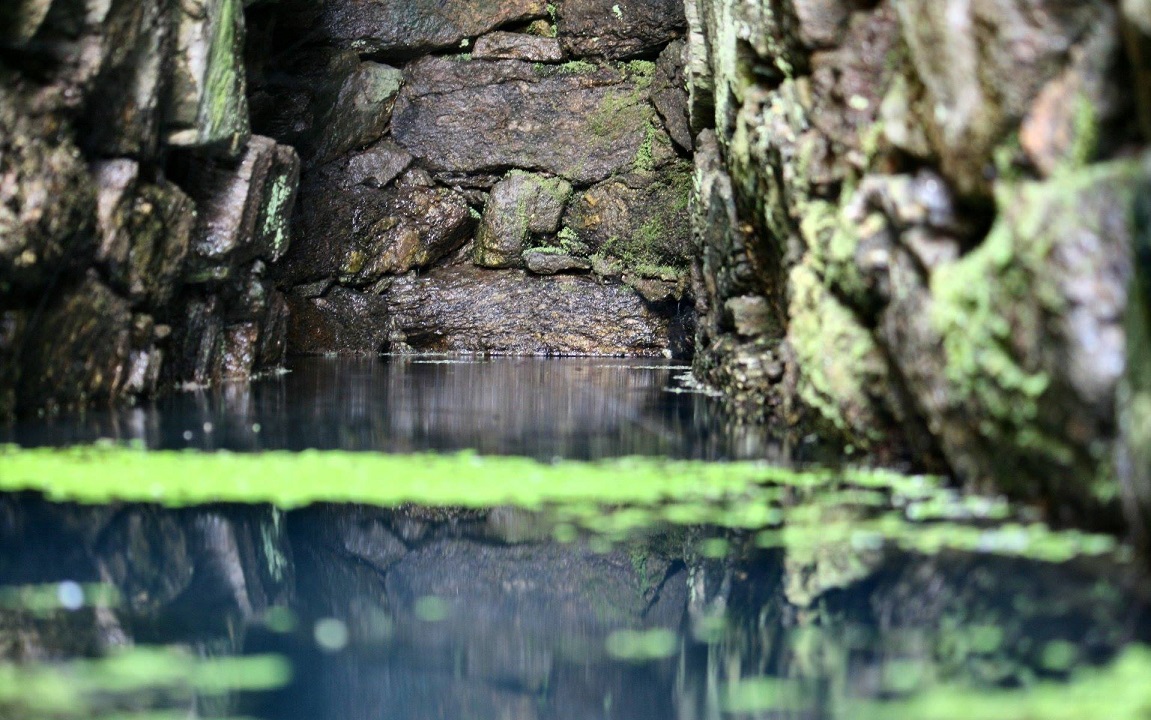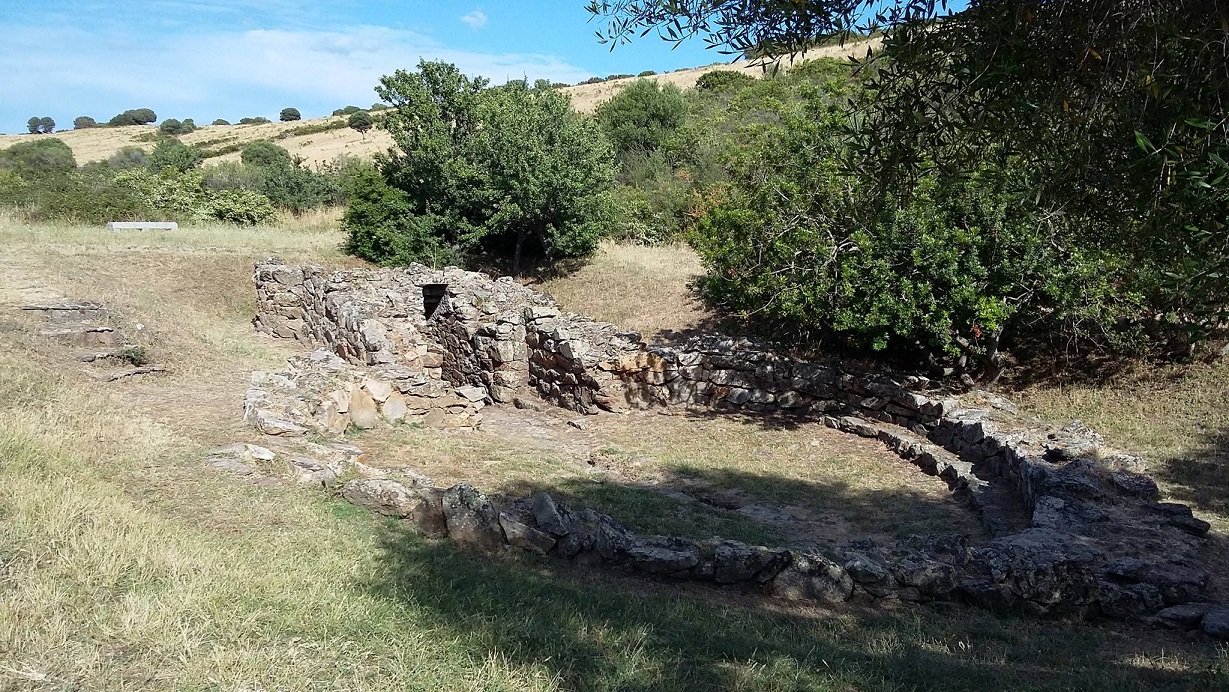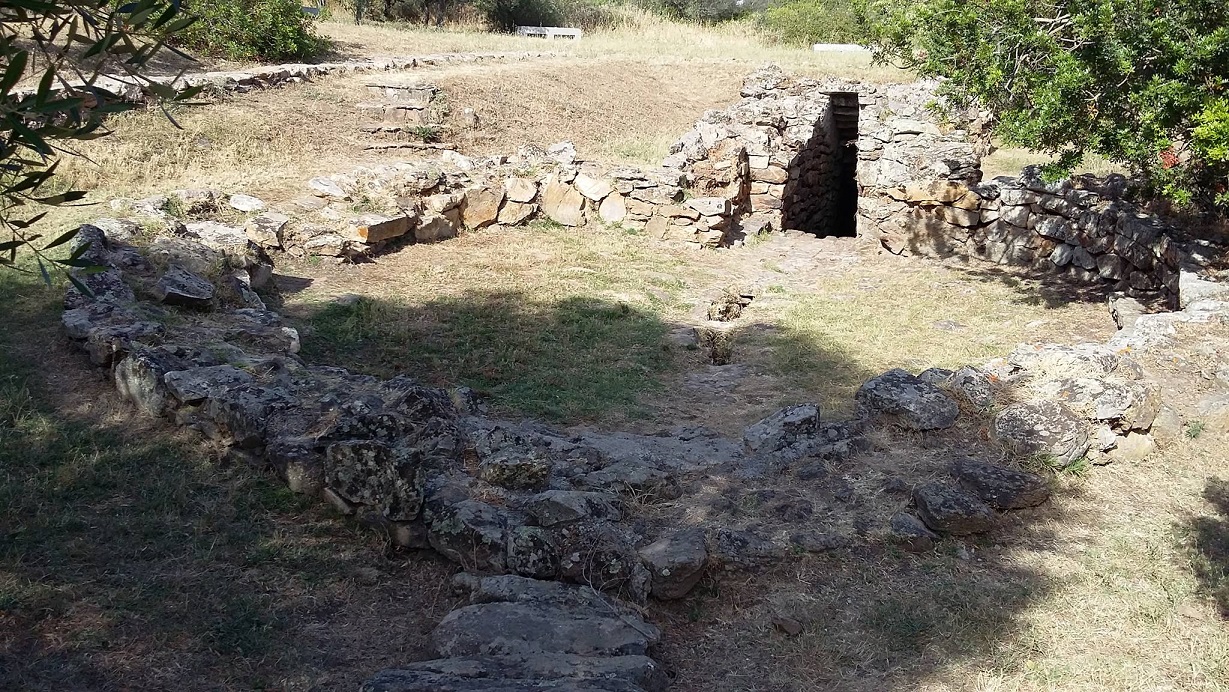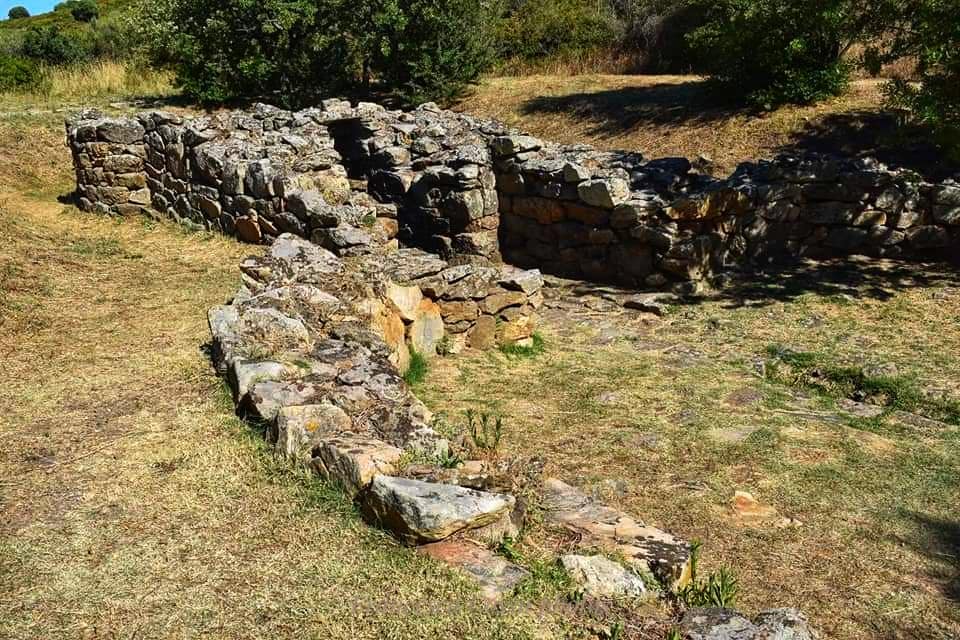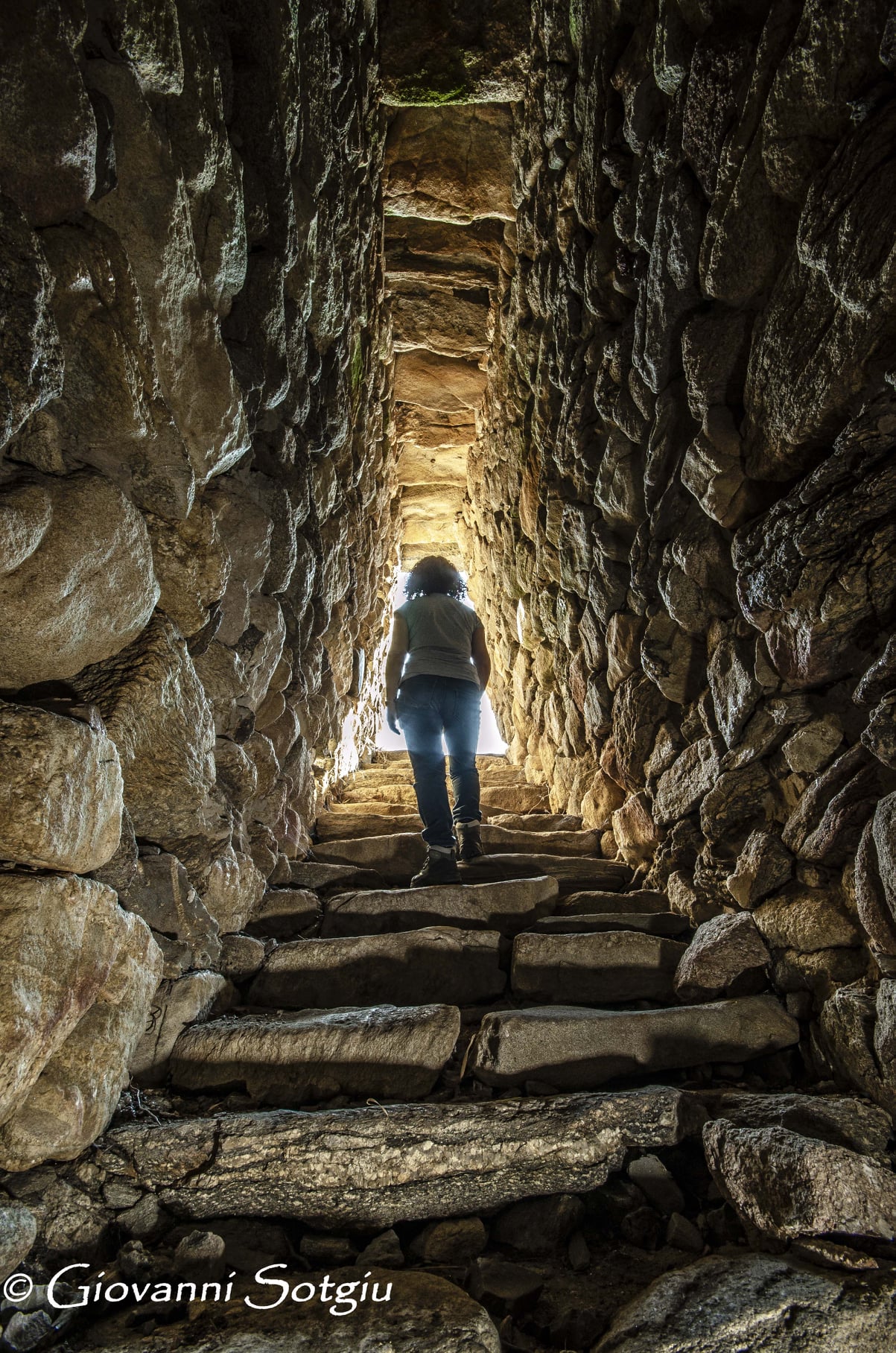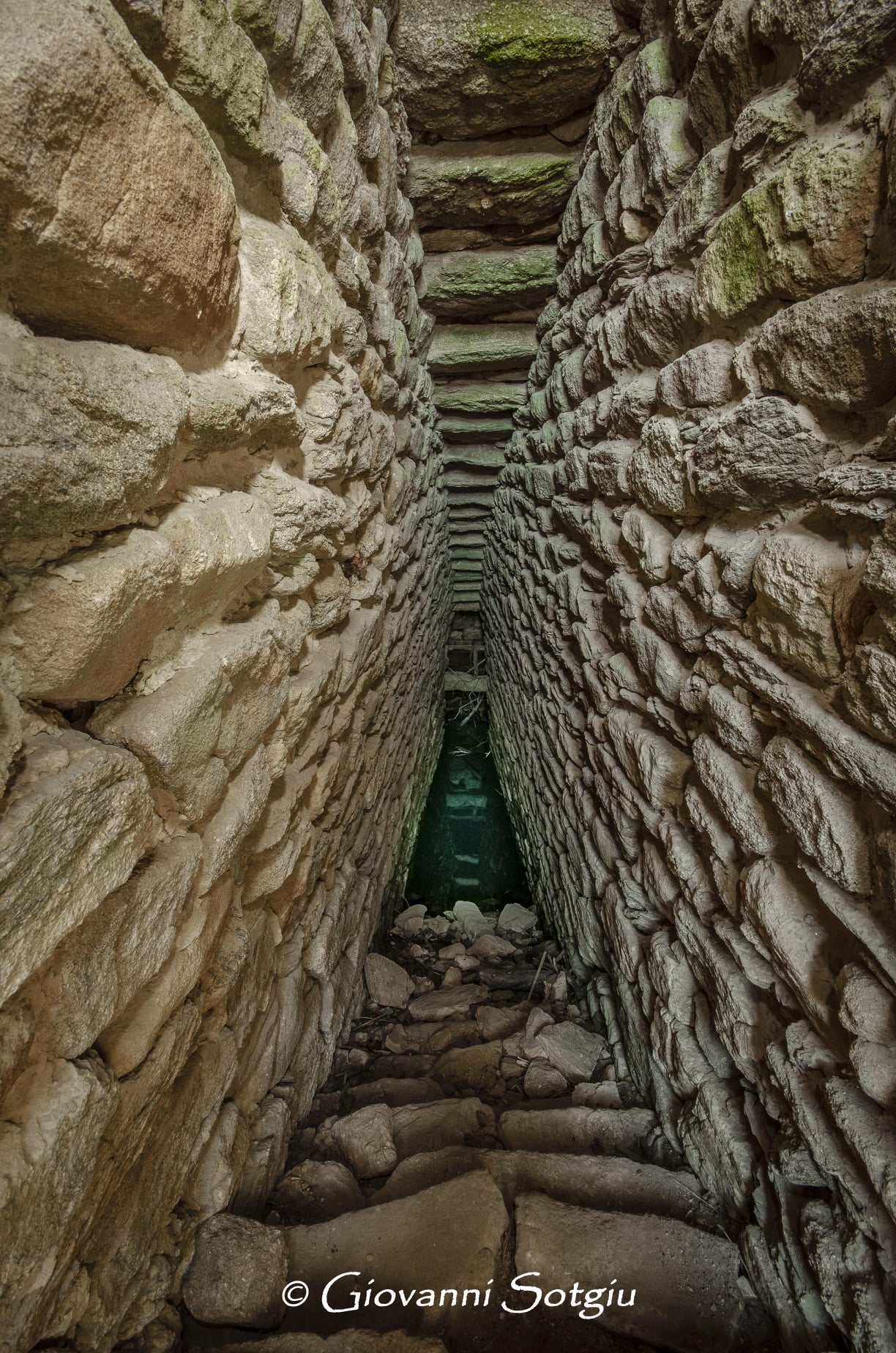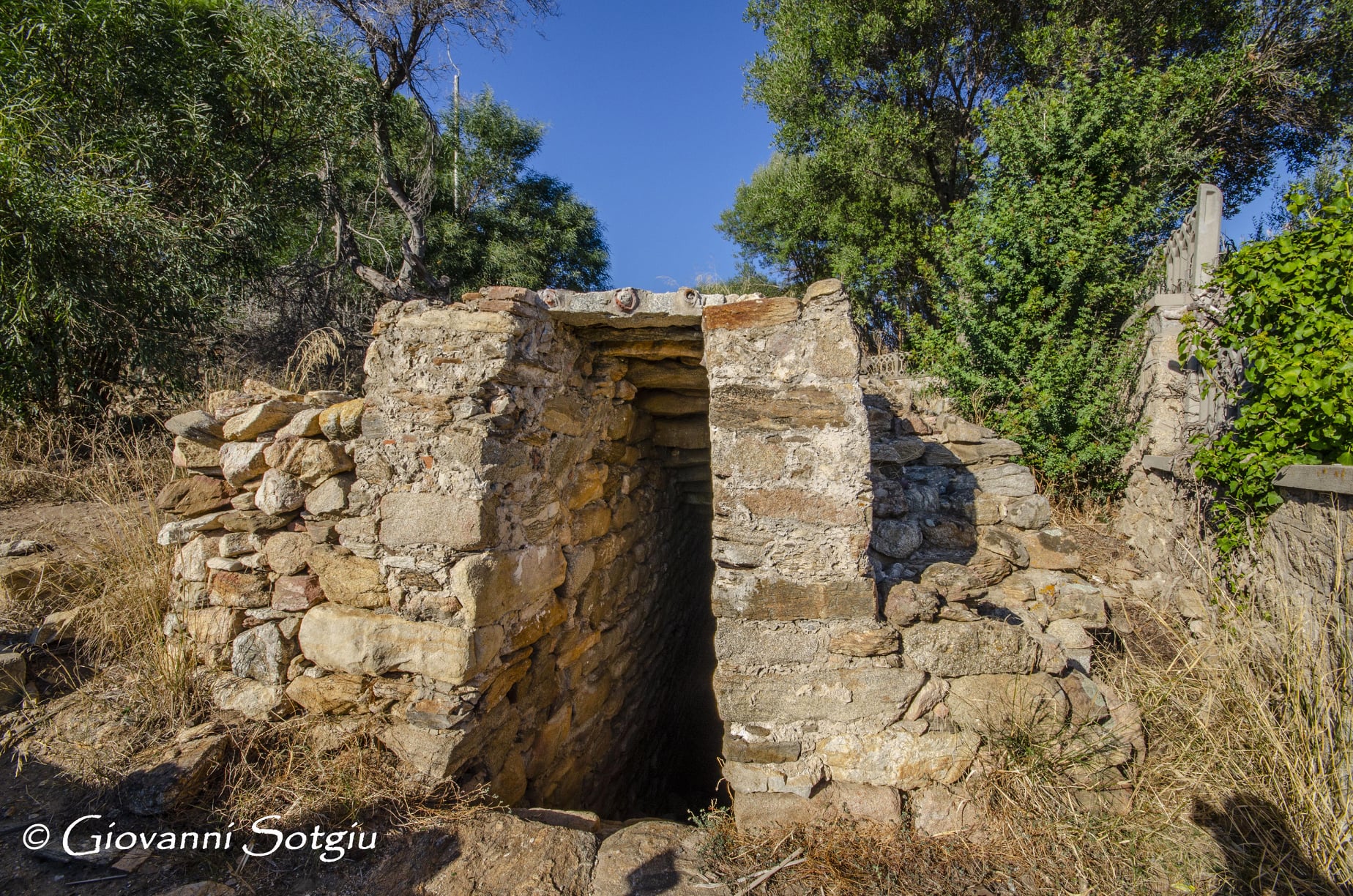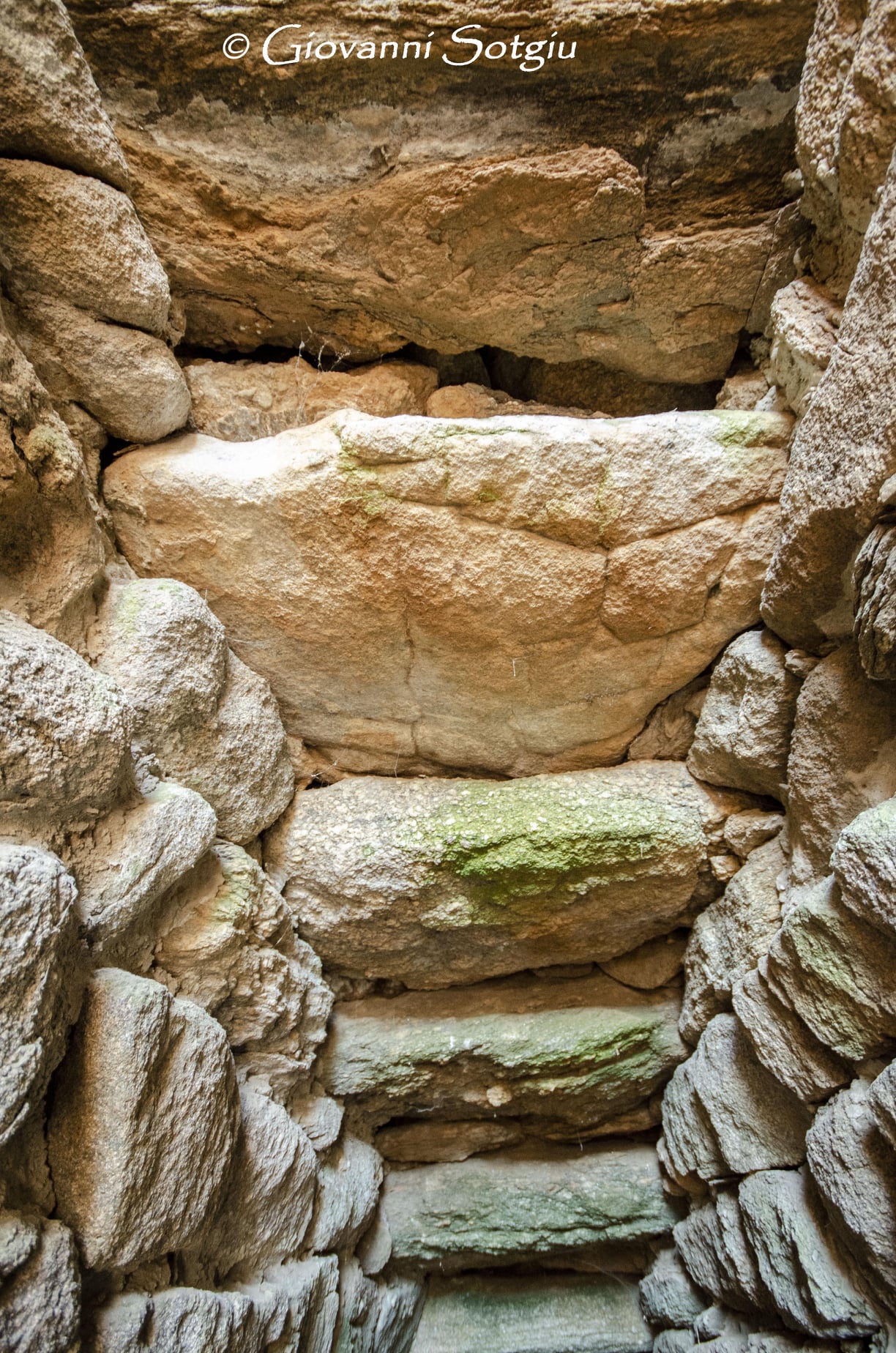4.2. The sacred well La Testa, in Olbia, consists of a large circular courtyard known as the “council room,” a vestibule, a staircase, and a “tholos” chamber that captures the spring water. The courtyard – paved and crossed by an underlying channel for water drainage – is enclosed by a circular wall that features a bench-seat along its entire length; it is accessed through an entrance open on the N side and equipped with a small staircase with 4 steps. The actual well temple – built with blocks of schist, granite, and trachyte, carefully shaped – partially retains the vestibule, constructed at a lower level than the courtyard. The trapezoidal environment features seats along the walls and a paved floor crossed by a drainage channel. At the back, the staircase opens, with 17 steps leading to the spring. The stairwell has a ceiling made of granite slabs arranged in a flat style at stair height (creating a sort of inverted staircase). The circular well chamber is constructed with stones arranged in 28 regular projecting rows. At the base is a platform created around a circular hollow from which the spring water emerges. Above the hypogeal cell, a “tholos” chamber rose, which remains with a maximum height of 1.65 m. The temple is dated between the end of the Bronze Age and the early Iron Age. At the time of excavation (1938), the well yielded numerous artifacts attributable to the Nuragic, Punic, and Roman ages (ceramics, metals, incense burners), indicating a certain continuity of use almost always linked to pagan rites. (Sardegna Cultura)
Built by the Sardonuragic people, the sacred well of Milis, in Golfo Aranci, has an estimated age of 2700 years, it was discovered in 1883 during the excavation for laying the tracks by the state railways, it is believed that valuable artifacts were lost, of the 40 steps originally, 22 are counted today, various artifacts such as rings and coins have been found, all preserved at the archaeological museum of Cagliari. The photos of the sacred well La Testa, in Olbia, are by Giovanni Sotgiu, Francesca Cossu, Beatrice Auguadro, and Andrea Vitussi. The photos of the sacred well of Milis are by Giovanni Sotgiu.




